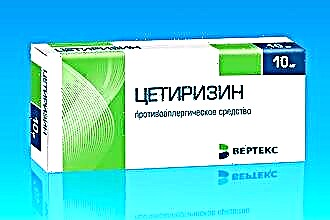Children often get colds, this is absolutely normal for an organism with an unformed immune system. However, in some cases, ailments are transferred relatively easily, and sometimes they have very disturbing symptoms. Excessive accumulation of mucus in the nose and its draining down the back wall of the nasopharynx into the throat is a reason for contacting an otolaryngologist.
What is posterior rhinitis?
 Spoli running down the back of the throat is called posterior rhinitis or rhinopharyngitis. The concentration of mucus in such an unusual place is due to the fact that the infection affects not only the nasal cavity, but also the nasopharynx, pharyngeal ring and the posterior pharyngeal wall. It is for this reason that the child's nasal breathing is rarely difficult, he is more worried about the following symptoms:
Spoli running down the back of the throat is called posterior rhinitis or rhinopharyngitis. The concentration of mucus in such an unusual place is due to the fact that the infection affects not only the nasal cavity, but also the nasopharynx, pharyngeal ring and the posterior pharyngeal wall. It is for this reason that the child's nasal breathing is rarely difficult, he is more worried about the following symptoms:
- runny nose that cannot be blown out;
- reflex cough;
- nausea, vomiting;
- feeling of a lump in the throat;
- difficulty swallowing food;
- increased body temperature;
- lack of appetite;
- bad breath.
Snot in the nasopharynx in an infant is a real problem, because the crumbs cannot suckle normally, they have to constantly be distracted to take a breath. Coughing most often worries babies at night, as snot runs down the throat and irritates the receptors of the cough reflex. In this case, the patient's bronchi and alveoli will be clean.
The most unpleasant symptom is nausea. It is in the pharynx that a large number of vomiting receptors are located, which are irritated by the flowing mucus. This can lead to a complete refusal of the child from food.
Reasons for violation
Posterior rhinopharyngitis may indicate the presence of serious diseases in the child's body, but it may also be a simple protective reaction of the body to adverse environmental conditions. Snot flowing down the back wall most often develops against the background of viral diseases. Less common are bacterial and fungal infections, allergies.
 Causative agents of posterior rhinitis:
Causative agents of posterior rhinitis:
- dust, tobacco smoke, animal hair and other allergens;
- insufficient room humidity;
- too high air temperature in the room;
- viral diseases (rhinoviruses, coronaviruses);
- fungal infections;
- bacterial infections (streptococci, staphylococci);
- measles, rubella, scarlet fever.
Determining the root cause of the disorder is very important in order to prescribe the correct treatment. The runny nose itself cannot be cured, it will pass only if it is possible to eliminate the disease that provoked it. Diagnostics is carried out by an otolaryngologist by examining the child and examining the test results.
Possible complications
When the mucus runs down the back of the throat, the baby is very uncomfortable. A complete rejection of food and weight loss is possible, but this is not scary, all kilograms can be gained 3-4 days after the end of the illness. Children do not sleep much because they are worried about coughing, and this causes stress and irritability.
Unpleasant sensations are not all that snot that flows down the back of the throat is fraught with. If you do not take up the treatment of the cause on time, then the respiratory tract and gastrointestinal tract may be affected, this can lead to the development of pneumonia, bronchitis, asthma, tonsillitis, and indigestion.
Clean air is the key to recovery
 Experienced pediatricians do not recommend starting treatment with antibiotics, vasoconstrictor drops and sprays, as this can only harm the baby. It is much more beneficial to provide the child with a favorable environment for recovery. To do this, you need to take care of the air he breathes. Prompt treatment will be facilitated by the adoption of such measures:
Experienced pediatricians do not recommend starting treatment with antibiotics, vasoconstrictor drops and sprays, as this can only harm the baby. It is much more beneficial to provide the child with a favorable environment for recovery. To do this, you need to take care of the air he breathes. Prompt treatment will be facilitated by the adoption of such measures:
- Regular ventilation of the room. A huge number of pathogenic organisms are concentrated in the room where the child is sick. Take the baby out 2-4 times a day, and open the window for 10-15 minutes.
- Air humidification. Too dry air leads to the fact that the snot dries up and stands in a lump in the throat, it is generally impossible to remove them. To prevent this from happening, monitor the humidity in the room, the indicator should not be lower than 60-70%. If you can't buy a household humidifier, spray water from a spray bottle, hang up wet towels, and wash the floors several times.
- Setting the optimum temperature. The child will not recover faster if you arrange the tropics in his room, on the contrary, it will worsen his condition. The optimum temperature is 18-20ᵒ С. Dress the baby in warm pajamas and wrap them in a warm blanket, but do not overheat the air, this is harmful to the nasopharyngeal mucosa.
Treatment methods
 Medication is used only as a last resort as directed by a doctor. It is best to take measures that will help alleviate the condition of the child and fight the infection faster. For this, the following treatment methods are suitable:
Medication is used only as a last resort as directed by a doctor. It is best to take measures that will help alleviate the condition of the child and fight the infection faster. For this, the following treatment methods are suitable:
- Washing. The nose should be rinsed as often as possible to disinfect the throat mucosa. To do this, use an infusion of chamomile, sage, oak bark, a solution of sea salt and furacilin. Also in the pharmacy you can buy ready-made mixtures, for example, "Aqua-Maris", "Aqualor", they have a moisturizing and thinning effect.
- Rinsing. Gargling is also very useful, since it is in it that the focus of the infection is concentrated. The procedure can be carried out using medicinal decoctions and infusions. You can also make a mixture of sea salt and soda on your own, if the child is not allergic to iodine, add a couple of drops to the liquid.
- Moisturizing the mucous membrane. Olive, sea buckthorn and peach oils have excellent moisturizing properties. They envelop the mucous membranes in a thin film, preventing them from drying out. Adding vitamins A and E to oils will also be beneficial.
Preventive measures
 Mucus that flows down the back of the nasopharynx is a sign of a weakened immune system. The disorder itself and the diseases that provoke it are easiest to prevent than to cure. To do this, you need to take all measures to strengthen local and general immunity.
Mucus that flows down the back of the nasopharynx is a sign of a weakened immune system. The disorder itself and the diseases that provoke it are easiest to prevent than to cure. To do this, you need to take all measures to strengthen local and general immunity.
Children who have problems with tonsils or adenoids should take trips to the salt rooms. It is important to monitor the level of humidity and temperature in the baby's bedroom all the time, and not just when he is sick. Dress it according to the weather and walk more often in the fresh air, this is good for the body.
The child's diet should also be approached responsibly. If the baby has a food allergy, exclude from the menu all dishes and ingredients that can provoke an exacerbation.
Try to give more vegetables and fruits, vitamins in their natural form are better absorbed by the body. If age allows, it is advisable to enroll children in sports sections, this also has a beneficial effect on health.
Let's summarize
 Posterior rhinitis can occur for a variety of reasons. Treatment depends on what kind of disease caused it, because a runny nose is not a pathology, but only a consequence. The correct diagnosis can only be made by an experienced doctor, sometimes additional tests and consultations with different doctors are prescribed to draw up a complete clinical picture.
Posterior rhinitis can occur for a variety of reasons. Treatment depends on what kind of disease caused it, because a runny nose is not a pathology, but only a consequence. The correct diagnosis can only be made by an experienced doctor, sometimes additional tests and consultations with different doctors are prescribed to draw up a complete clinical picture.
In no case can the problem be ignored, because neglected conditions can lead to serious complications and the development of chronic diseases. However, it is also not worth starting drug therapy with potent drugs immediately. It is important to create ideal conditions for the child's body to fight the infection itself.



